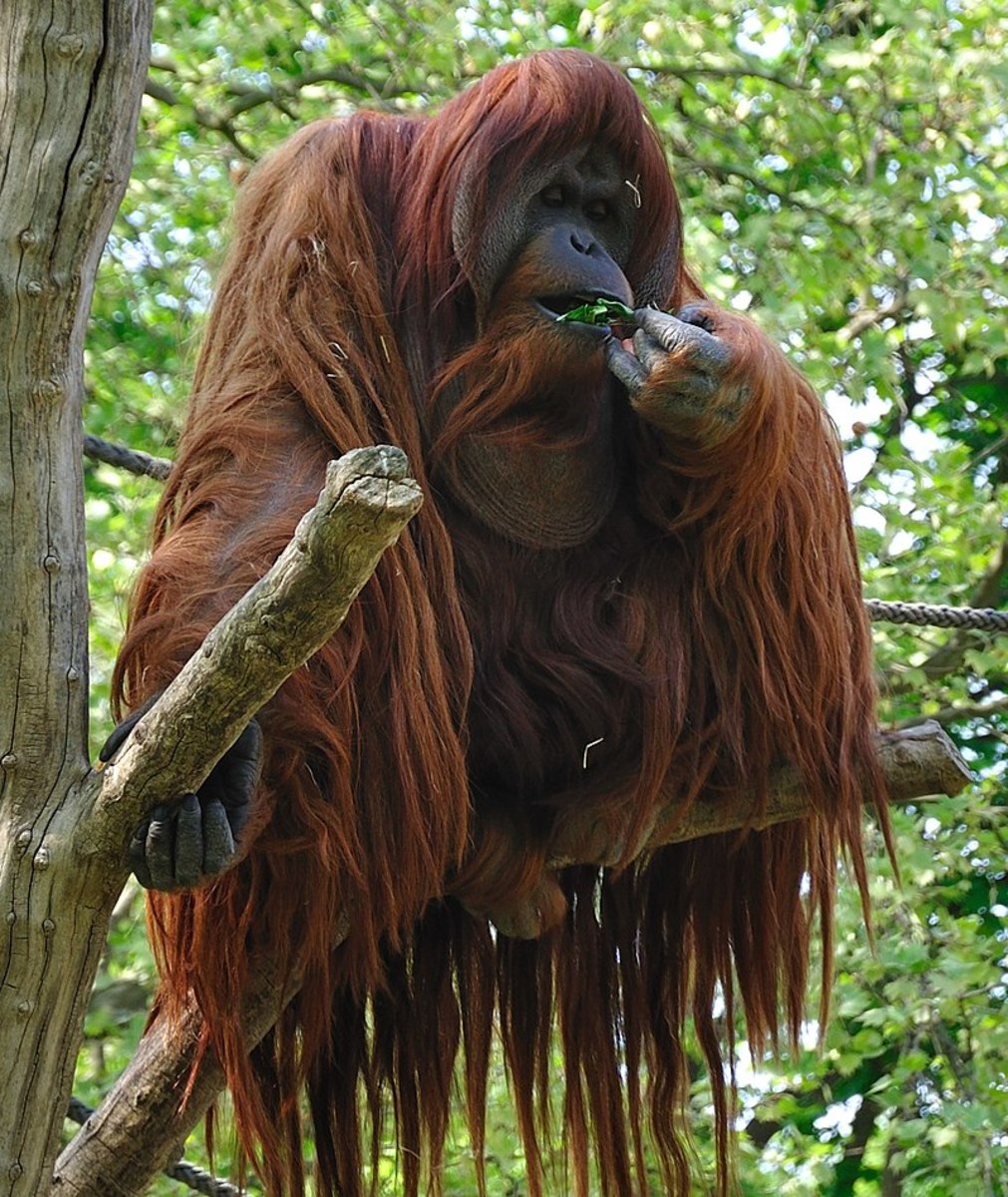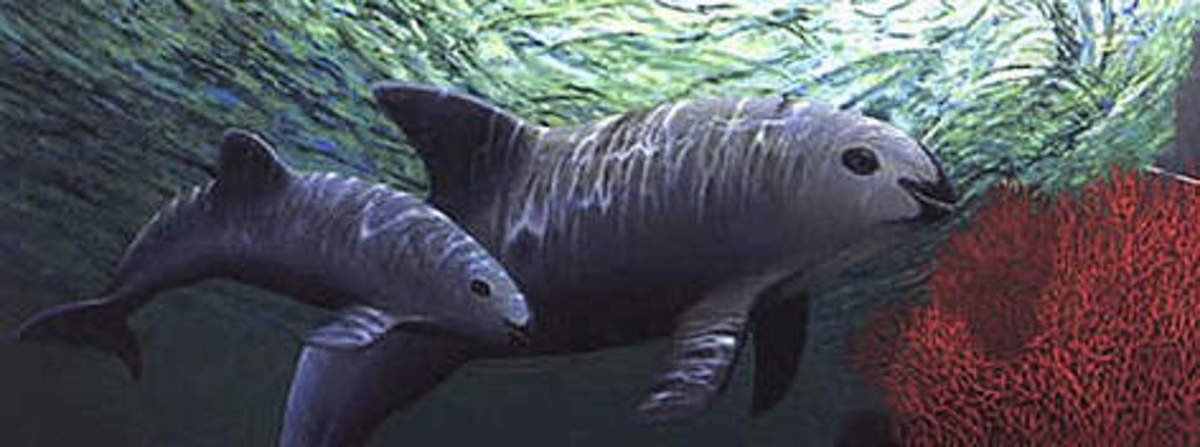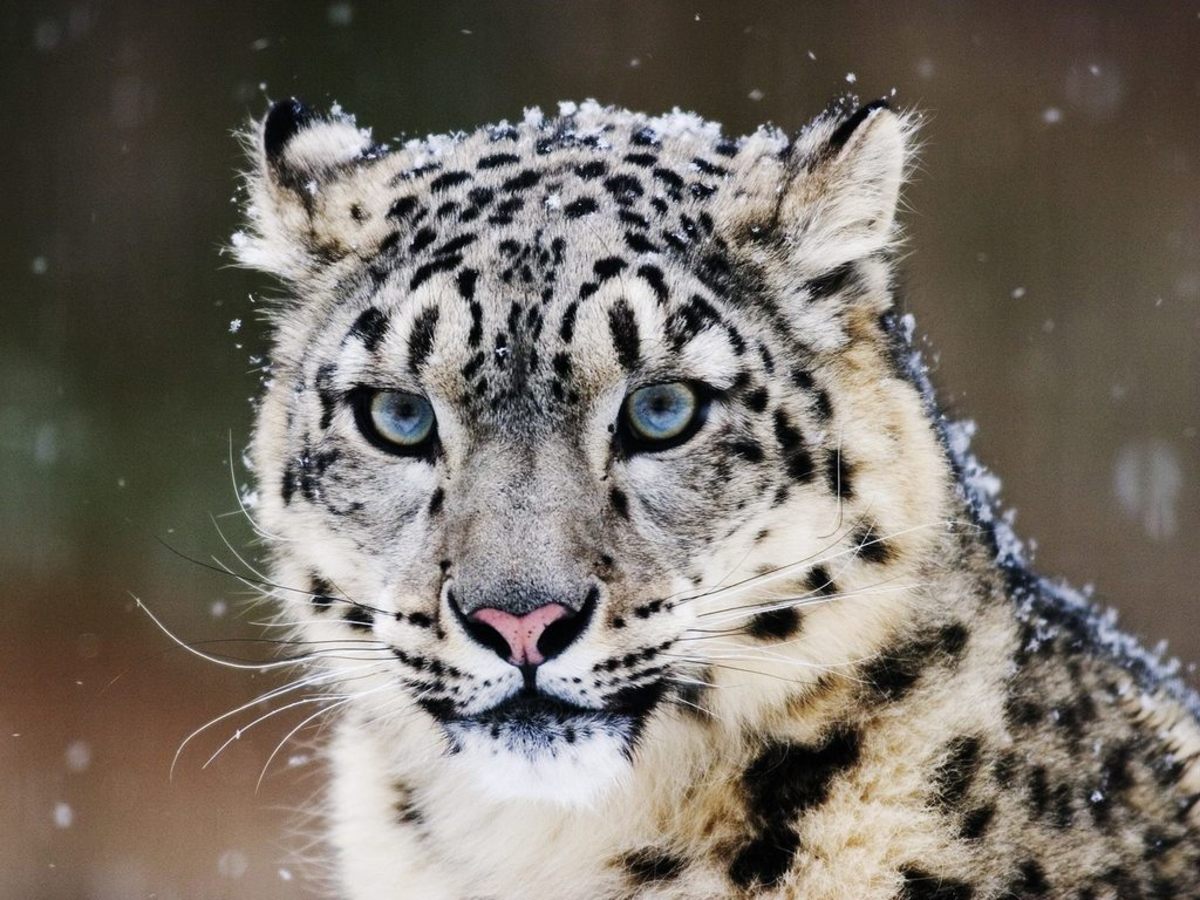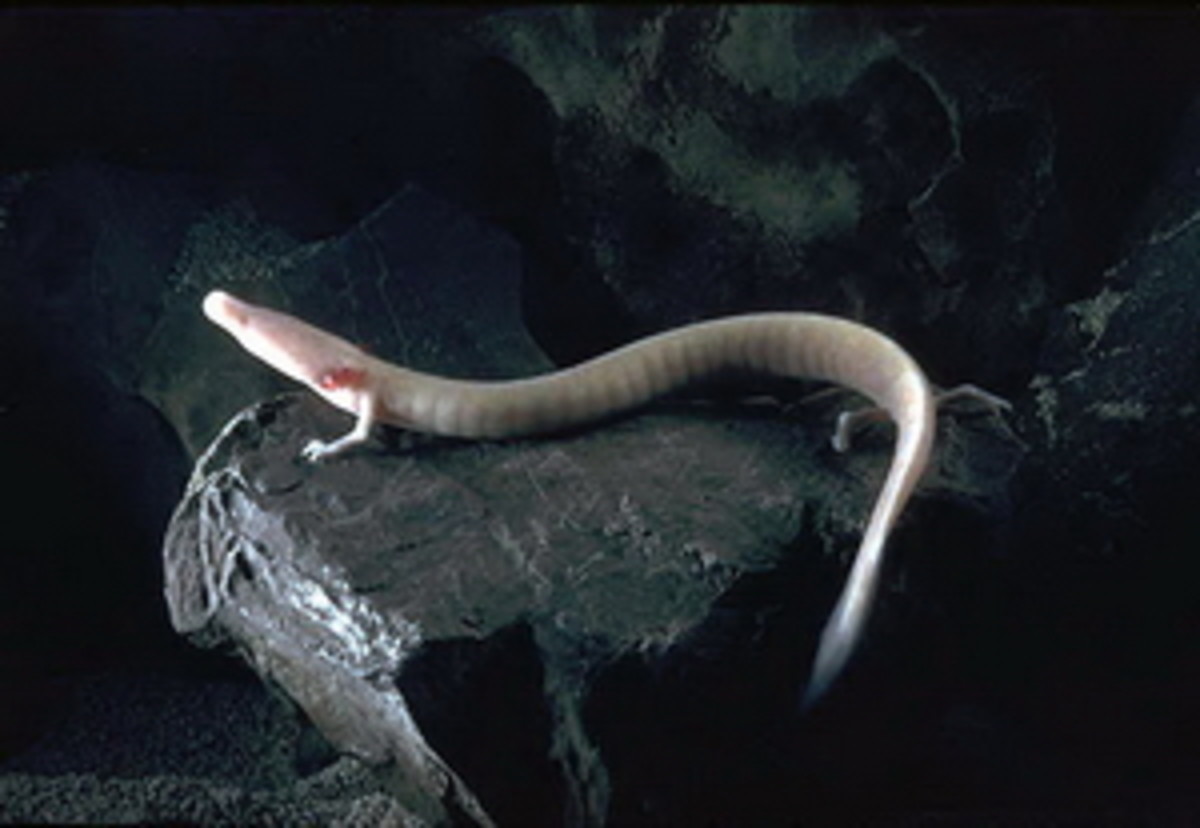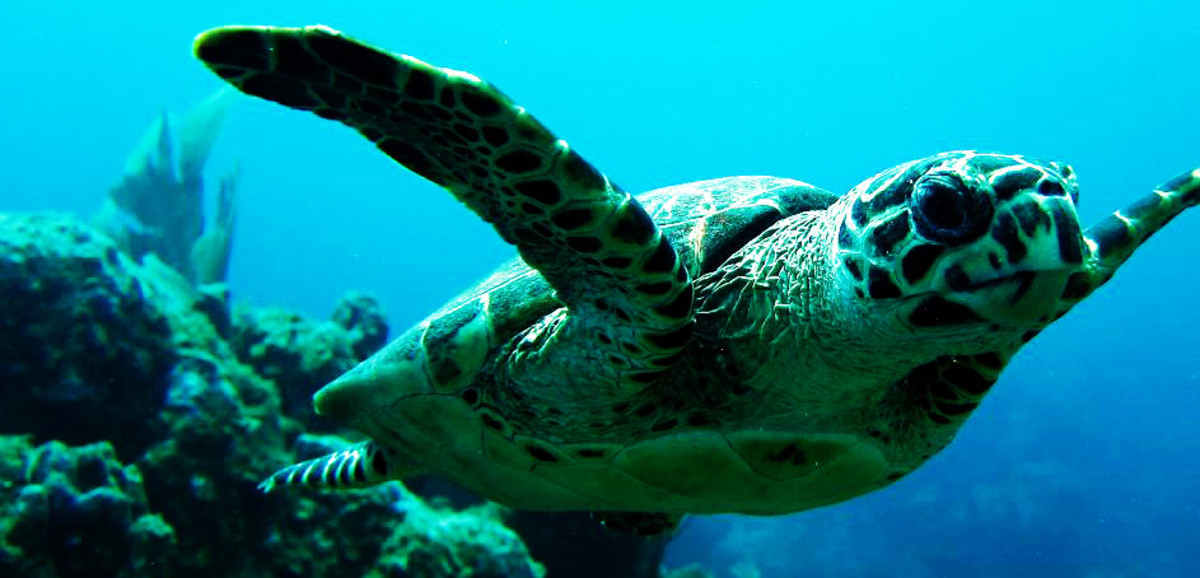Black-breasted Puffleg - Rainforest Endangered Species
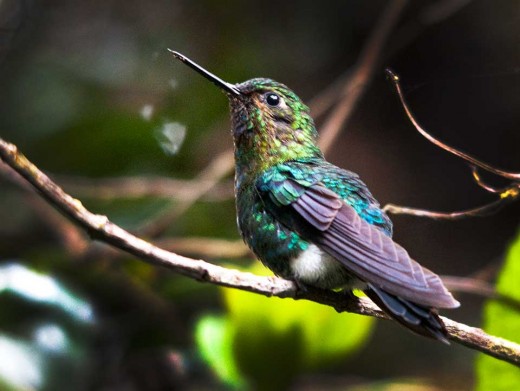
High in the Andes Mountains, deep in the tropical rainforest, there is a tiny hummingbird fighting for its existence. Years ago it roamed free, feeding on the nectar of the flowering fuchsias and acacias of the high páramo wetlands. With the destruction of the habitat for farming and production of carbon for fires, the population of the Black-breasted Puffleg has dwindled to critically low numbers, threatening its survival.
Critically Endangered in the Tropical Rainforest
BirdLife International has ranked the Black-breasted Puffleg as critically endangered because of its relatively small range and declining population due to deforestation within its severely fragmented habitat. In the 19th century there were a number of species collected, an indication that they were fairly common within the region. However, it has been predicted that this tiny creature has experienced a 10% to 19% decline every 10 years due to human encroachment.

The map at right indicates the range of the Black-breasted Puffleg (highlighted in pink) prior to the 20th century. The red area is the presumed present range based on available habitat and limited sightings. Whereas in the 19th century there may have been thousands of individuals, the population is now calculated at less than 200 adults.
In 2001 the Jocotoco Foundation purchased 1,000 ha (2,500 ac) of land in the Yanacocha area on the northern slopes of the volcano Pichincha in an effort to preserve some of the remaining habitat that is necessary to sustain these rare birds. An additional 1,250 ha (3,100 ac) of private reserve in Verdecocha protects more of this primary and secondary forest. Part of the Black-breasted Puffleg’s habitat lies within the Mindo-Nambillo Protected Area and the Cotocachi-Cayapas Ecological Reserve. However, deforestation continues and many organizations are fighting to maintain this important species’ home.
The present range of this critically endangered bird is quite restricted, occurring only along the northern and northwestern ridges of the Pichincha volcano 15 km (10 mile) west of Quito Ecuador, and in the Cordillera de Toisán within the Cotocachi Cayapas Ecological Reserve. The suitable habitat where this species can exist near the volcano has been greatly reduced by deforestation to an area of 34 km2 (13 mi2). A small population was discovered in 2006 above the Intág valley in the Cordillera de Toisán. In the 19th century it was known to inhabit areas of the Atacazo volcano but no recent observations have been confirmed. The best speculation is that the total distribution covers no more than 68 km2 (26 mi2).
On June 23, 2005 the Black-breasted Puffleg was adopted as the official emblem of the city of Quito Ecuador.
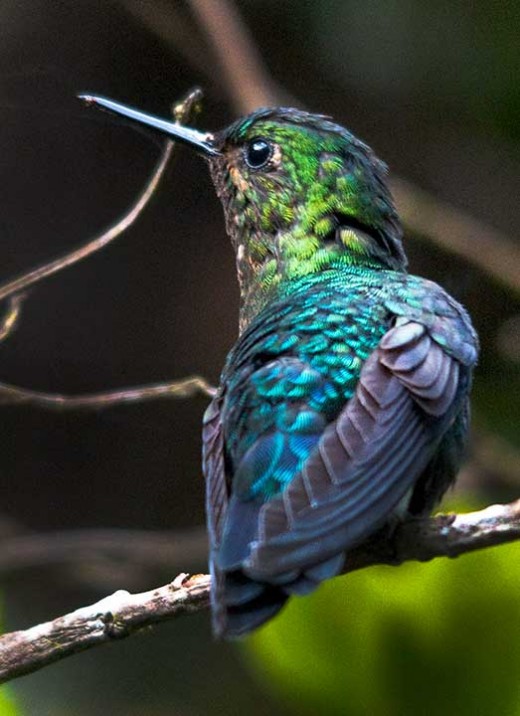
Appearance
The male and female Black-breasted Pufflegs are relatively dimorphic in their appearance. Both genders are comparatively small, approximately 8 – 9 cm (3 – 3.5 in) in length. The bill is short and straight. The male is mostly black with a greenish iridescence, particularly around the crown and lower back. The forked tail is a deep steel-blue while the undertail-coverts and crissum (area below the rump) exhibit a violet-blue sheen. There is also a violet gorget or throat patch that can be noticed when the bird faces the observer. The large white leg-puffs are obvious on both genders, this significant asset accounting for their name.
The female has a more bronzy-green appearance on its upper-parts transcending to a teal hue on the rump and tail. Her under-parts exhibit a coppery-green color and possess a violet throat-patch and puffy legs similar to the male. While the male is unmistakable in its characteristics, the female is homogenous with the Turquoise-throated Puffleg, which at this writing has not been reliably observed in Ecuador since the 19th century and may already be extirpated from the country.
Habits and Habitats
Unfortunately, due to its limited habitat and small population, little is known about the Black-breasted Puffleg. It prefers humid and wet cloud forest areas, particularly at the higher altitudes. Most recent sightings have occurred between 2,850 and 3,500 m (9,350 and 11,500 ft). It is speculated that this tiny creature is an altitude migrant, favoring higher altitudes during breeding season (November to February) and descending to the lower elevations during the months of April through September. This migratory practice may be due to the flowering of certain vines, fuchsia plants and ericaceous trees. Since it has been recorded feeding on 27 different species of food-plants it is not believed that its range is restricted due solely to dietary constraints.
This species is not a particularly vocal bird, although at times will utter some small noises. It feeds low in shrubbery, favoring forest borders. Like most hummingbirds, it will perch and observe surrounding activity from a comfortable distance, speeding off when a predator ventures too close.
Environmental Threats
The main threat to the Black-breasted Puffleg is deforestation for the purpose of clearing land for agricultural purposes, harvesting of timber and the production of carbon. A significant proportion of the human population within this region relies on firewood and charcoal for cooking and heating. It is estimated that nearly 93% of suitable habitat within the probable historic range has been destroyed, with 97% lost in the Pichincha Province. Natural disasters also play a part in threatening the existence of this tiny creature with two eruptions of the Pichincha volcano occurring since 1999. Much effort is being placed upon preserving the natural habitat but poaching and complacency continue to play a significant role.
When and Where to Locate this Endangered Species
The best time of year to see the Black-breasted Puffleg is during the months of April through September while it is away from its breeding grounds at higher altitudes. In particular, May through August are the recommended months to catch a glimpse of this elusive bird at the Yanacocha Reserve northwest of Quito. This is also a good opportunity to view this tiny hummingbird at the Verdecocha Reserve. Yanacocha is a short trip from the Ecuadorian capital of Quito. It cannot be reach by public bus but taxis can be hired to transport the adventurer to the reserve entrance and wait for them to return. Verdecocha is a little more difficult to find and prior reservations are required. Be aware that traveling to one of these locations does not guarantee the viewing this rare beauty. Many people have searched for this elusive creature but only a few have been blessed with its presence.
Summary
The Black-breasted Puffleg is a diminutive hummingbird that is part of a shrinking population. It is one of the most rare species in the world and can only be viewed in a restricted area. Any opportunity to observe this beautiful specimen has its own rewards. If efforts to prevent its demise are not continued, it will follow the path of the dinosaur and become extinct over the next 50 years.
Related Links
- Discovering the Birds of Ecuador
Blog on the birding areas of Ecuador - The Birds of Ecuador
Photographs and articles about the birds of Ecuador




